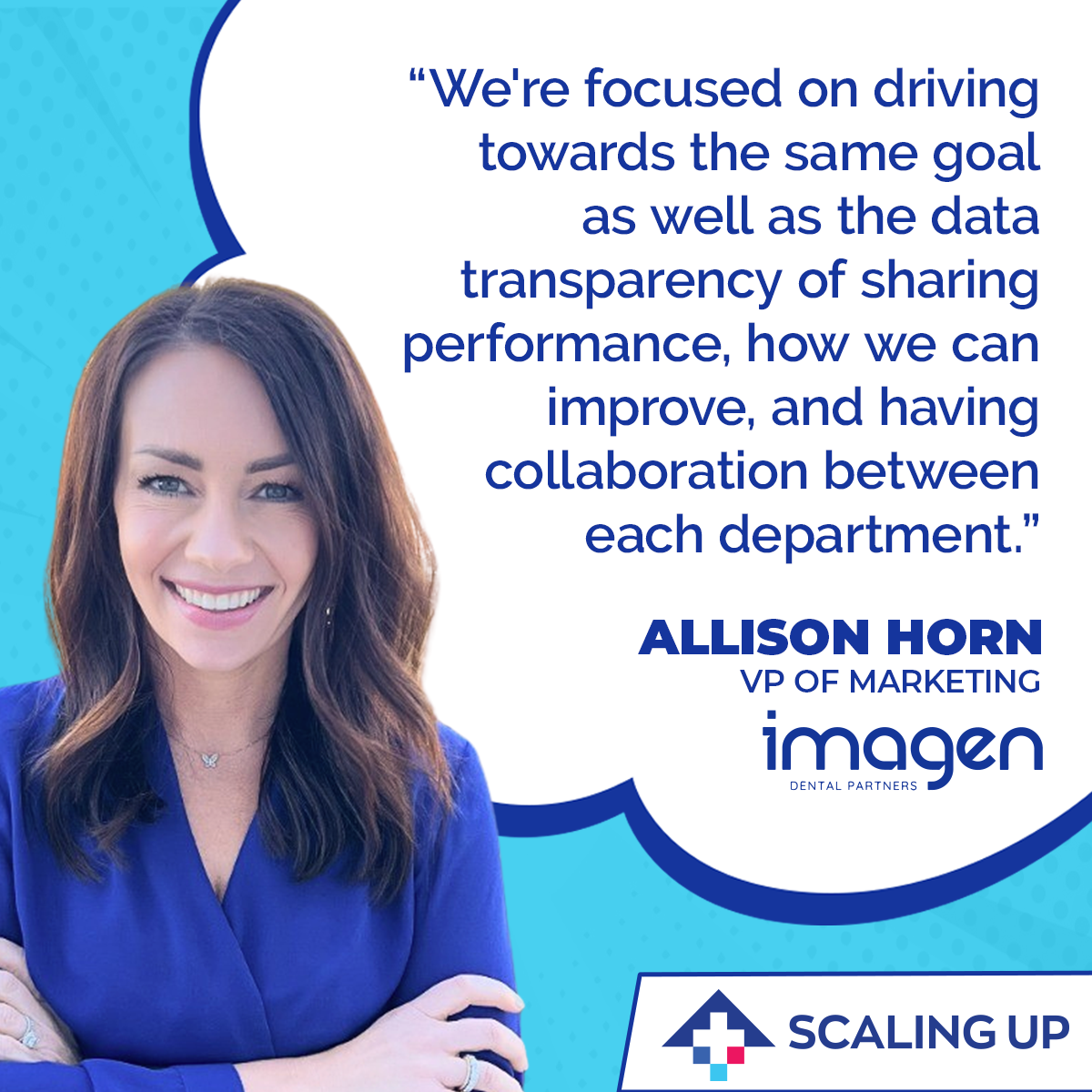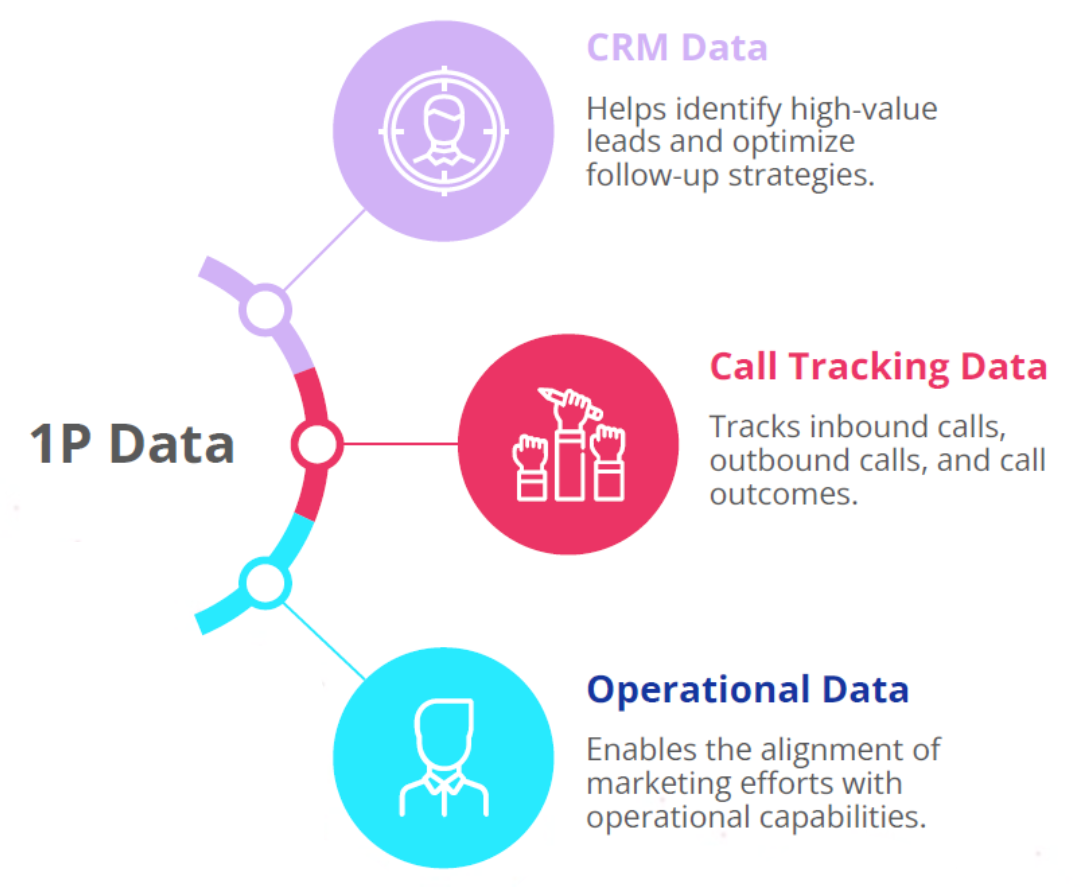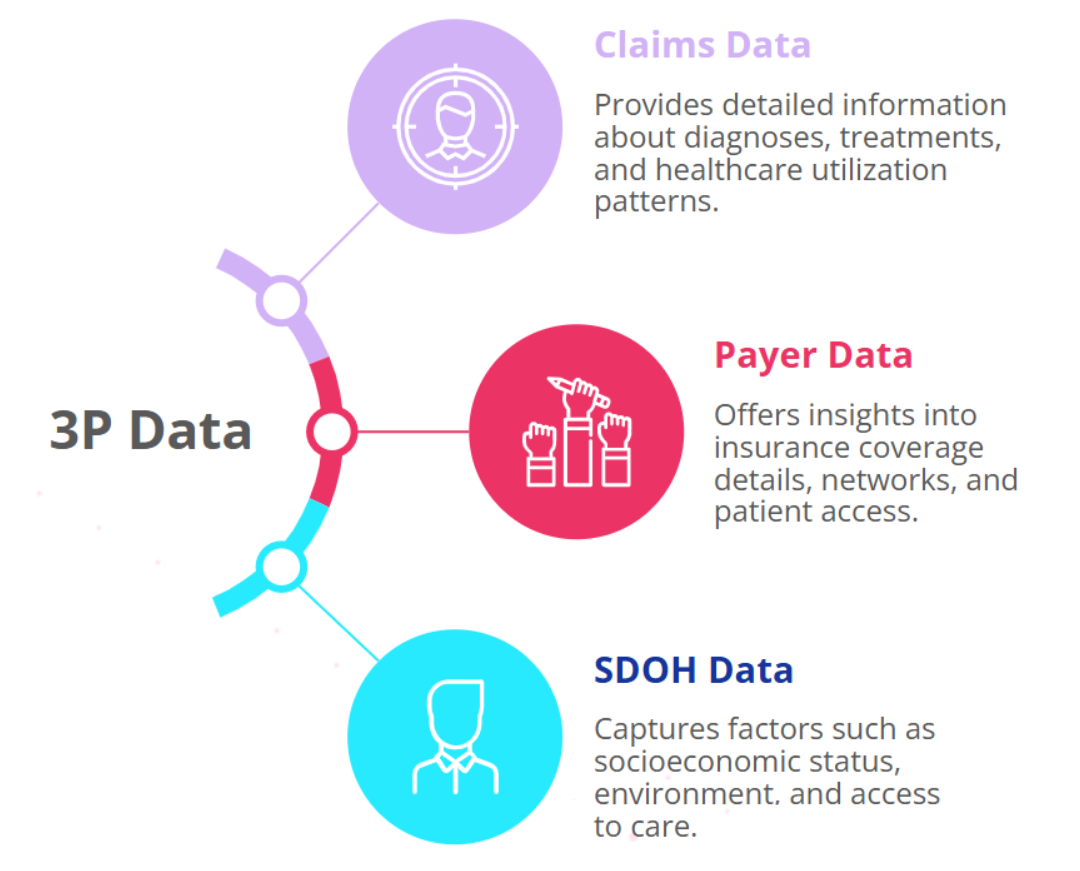My goal in hosting Scaling Up was always to be THE healthcare performance marketing event giving marketers exactly the information they need. Healthcare marketers face a variety of challenges, from HIPAA compliance to staffing shortages. Last year, our attendees told us the main issues they were concerned with for 2024 were patient acquisition and data-driven marketing. This year, the top three responses were reporting on marketing impact & ROI, reaching the right audience, and low patient volumes.
These challenges are why we put together two days jam-packed with sessions to address every aspect of those topics.
We gathered the best marketing professionals representing dozens of the top companies in healthcare—HCA Healthcare, Smile Brands, Thriveworks, Northwell Health, UChicago Medicine, etc.—and brought them together for panels and presentations on everything from growing patient volume and improving lead quality to investment mix modeling and attribution.

If you want to see a full list of all 50 speakers and view some recorded sessions, you can visit the Scaling Up website; there’s a ton of valuable information there. For now, I want to focus on my key takeaways from this year’s event, as well as some recommendations from healthcare marketing experts that will help you plan for a successful 2025.
The Role of the “Marketing” Leader has Evolved
I put “Marketing” in quotes because it’s no longer an adequate description of everything we’re expected to do.
The best analogy I can give is the medieval Barber, whose job expanded from cutting hair to bloodletting to pulling teeth, to even amputating people’s limbs. They were still called “Barbers”, but they were doing a lot more than just haircutting and grooming, so the title didn’t convey the wide range of their responsibilities.
We, marketers, aren’t responsible for amputating any limbs—at least, not yet—but the job of marketers has evolved to cover damn near everything else, from patient experience to tech integration. Today’s marketing leaders can’t just be knowledgeable about sales and data analysis. They also have to collaborate with:
- Technology
- Operations
- Finance
- Legal
- Sales
And need expertise in areas including:
- Technology
- Patient Experience
- Thought Leadership
- Recruitment
- Product Management
…and that’s far from the full list. Modern healthcare marketing covers the whole sales funnel from top to bottom and beyond, encompassing everything from patient scheduling to ROI validation. CMOs are expected to collaborate closely with operations and IT on initiatives ranging from EHR integrations to recruitment drives.
Mari Considine, Chief Marketing & Development Officer at Acenda Integrated Health, explained some of the challenges of modern healthcare marketing:
“We need clear communication about capacity limits, resource availability, and potential bottlenecks. It’s about setting realistic targets and avoiding overextension by working closely with our ops and programming crews. At a team level, we’re aligning our plans with operational data to identify growth areas and where we may need to pace ourselves. Overall, it’s about effective communication, data utilization, and a shared goal for sustainable growth, maintaining program quality, and delivering the experience our consumers expect.”
All of this is to say that the traditional understanding of “marketing” as just advertising and promotion no longer applies. It’s not clear what the best terminology is to describe this job that now requires such a wide range of skill, adaptability, and collaboration, but it is clear that the role of today’s marketer is a complex one that has outgrown the little box in people’s heads when they hear the term “marketing.”
Use Data to Achieve Alignment
I don’t think there’s a week where I’m *not* talking about the importance of alignment (MOPS or otherwise), but the big takeaway from Scaling Up was that the best way to do this is by using data.
It’s not enough to just talk about general ideas you have and hope that everyone will get on board. You need actual data, because that’s what’s going to bridge the gap between your various teams and make sure that everyone is working with the same numbers and understands how those numbers have to drive the business. And one of the most important numbers is capacity.
“It’s about finding the right growth and attracting those customers to the points of access. And from an operations perspective, it’s having conversations with our ops team, our access team to really identify where access exists because we have a lot of providers that are 9 months booked out, 12 months booked out…it’s identifying those right target customers and bringing them into the doors that are actually open. So it’s a bit of a unique challenge, but data solves the problem.”
—Chris Pace, Senior Director of Digital Marketing at Banner Health
The other big advantage of data is that it provides an objective touchpoint for everyone in the company. If you can point to some business intelligence data and say, “these are the numbers that explain what’s driving revenue for the company,” that’s going to be relevant to every team in your organization, and give them a common understanding of where they are, and where they need to go.
“BI, in many ways, is the glue that holds together a lot of different departments. Sometimes we exist in silos, and the data brings us together towards a main vision. You want to connect the marketing people to the finance people, the marketing people to the revenue cycle, the IT operations people, the actual care operations, and the physicians. The way you’re gonna do that is through business intelligence because marketing isn’t just a marketing problem. Marketing is a finance problem. Marketing and RCM are marketing problems. There are all these factors and facets—you wanna get everybody on the same page behind one thing. BI is the department that’s gonna bring that all together.”
—Ibrahim Albaba, Director of Growth at CLS Health
Let Business Goals Lead The Way
Speakers agreed that you need to show how marketing initiatives align directly with business objectives, avoiding marketing jargon and speaking the language of your colleagues. To foster trust across cross-functional teams, they’ve found that shared KPIs and democratized data and dashboards highlighting progress toward common goals helpful.
Marketing investment planning must also begin with business goals. When considering channel diversification or budget increases, ask:
- What’s the current performance of existing channels, and are there further optimization opportunities?
- Which service lines and locations are a priority for growth?
- Where are the patients you want to reach, and what’s the best way to connect with them?

Leverage Your Existing Data
One of the biggest untapped resources for many practices is data that has already been collected but has yet to be used. There’s no better market research than diving into the data on your customers to figure out what they want and need. For organizations that handle a large volume of calls, call tracking provides a powerful method for extracting actionable insights from all the data that’s being collected over the phone.
“We’re pretty heavily skewed to the phone as scheduling first. I think we field something like 10,000,000 phone calls a year… But the coolest thing about where we are in call center data is you have this gold mine of unstructured data that if you can convert it, using LLM or whatever technology you have in your stack, you can glean a ton of insights on what might you do in the next at-bat to serve that customer in a more delighted way. So, one of the things that we’re working on is really taking the terabytes of unstructured data that come through in the voice channel and turning that into a structured capacity that we can then use to service and grow in a more thoughtful way.”
—Chris Pace, Banner Health
From data you can wring out from call tracking to data that already exists in your CRM, chances are good that you’re sitting on a wealth of untapped data that could help you find new patients and serve your current patients more effectively.
Related Session: 5 Ways to Use 1P & 3P Data
Our Senior Director of Analytics, Alex Kemp, ran a session on exactly this topic, sharing five ways that healthcare groups can make use of the data at their fingertips to improve their marketing performance and hone their marketing strategy.
First-party (1P) data is data you’re already collecting from current patients, potential patients, or internal operations. This includes anything you’ve entered into your CRM, such as patient age and appointment dates, information gathered by call tracking, and operational data, such as unanswered call rates.

Third-party (3P) data is collected by someone else (e.g., large data aggregators), and you generally pay a fee to access their vast troves of data. This might include insurance claims data around diagnoses, as well as payer data to show which audiences are covered by which insurance.

Here are the five ways you can best make use of both types of data:
- Roundabout Feedback Loops: Use 1P data to fill the gap between your CRM and ad platform, sending things like Show Rate to ensure Google isn’t just comparing Cost Per Lead without all the necessary information.
- Voice of the Patient: Use 1P call tracking to find the biggest reasons leads don’t book appointments and adjust marketing accordingly.
- Call Performance: Use 1P operational data to track missed calls and low conversion rates to address staffing issues in volume and quality.
- Precise Targeting: Use 3P claims data to find potential patients in a geo region that aren’t already receiving care, then layer on audiences by diagnosis and insurance that you accept.
- Enriched Context: Use 3P data to identify social factors that affect health, such as education and economic stability, and use those to refine messaging
Meet Patients Where They’re At
Understanding what patients truly want is the first step in creating next-gen patient journeys. While it may seem obvious, begin by simply asking them how they prefer to engage with your brand. Do they favor using MyChart, or would they prefer a phone call? Do they prefer SMS over email? You can also use resources like NNG to gather insights into consumer preferences, behaviors, and psychographics.
“That digital-first, modern booking and scheduling experience, paired with a robust CRM to streamline the journey from booking to the chair, is highly valued by our members. We’re constantly working on it, with live funnel tests currently running on calendar steps, site selection, and visual layout. As long as I’m here, we won’t stop optimizing; it’s exciting to see how we can make the process even more efficient.”
—Matthew Fitzgerald, Chief Marketing Officer at Tend Dental
The other element to consider is that building the patient journeys of the future requires the right marketing technology. Customer data platforms (CDPs), such as healthcare privacy platform Freshpaint and call tracking systems like Liine, Patient Prism, and Call Rail, give you access to critical data on how patients interact with your brand and the outcomes of those interactions. With this information, you can refine patient journeys by eliminating friction points and identifying opportunities to deepen the relationship.
“When we think about reaching out our hand via marketing and other channels, we still need to assume that the individual on the other side is not entirely comfortable with reaching back… We constantly as marketers have to be making that individual feel welcome, supported, and heard every step of the way through the care that we provide, but also through unique strategies of marketing and engagement throughout the entire journey for that individual, not just getting them to the door for the first time.”
—Michael Midgette, Chief Growth Officer at Thriveworks
Related Session: Digital Front Doors That Convert
Today’s digitally-savvy consumers expect a seamless online experience, and a poor digital front door is often enough to lose you a customer. Our Senior Creative Director, Jean Zhang, ran a session on how to design a digital presence that meets consumers where they are to build trust, enhance credibility, and make it easy to book an appointment.
Some of her key tips for creating a digital front door that won’t turn customers away:
1) Create Easy-to-Use Navigation
- Highlight and showcase your focus areas (which the business has agreed upon)
- Make conversion pathways straightforward and easy to access
- Minimize the number of steps in the conversion pathway
- 7 major categories are the sweet spot for global navigation
- Breadcrumbs are essential to help users backtrack
- Ensure consistent experience across mobile
2) Understand User Needs and Design Around Them
- Review usage data to understand how users are using your site
- Heat maps, performance data, path analysis audits are all valuable
- Patient and user interviews are another valuable source of data
- Ask users what they have difficulty finding, then make it easier
- User headers and logical grouping for easy scanning
- Make your website accessible for the disabled
- Search functionality should be backed by research to see how your users are searching
Understanding consumer behavior and wants is all part of meeting them where they’re at and should be reflected in your digital front door to ensure they have a good digital experience with your brand.
Request a Free Digital Front Door Audit.
Solve For “Why”
If there’s one overarching lesson we can learn from all this, it’s that focusing on the bigger picture can help clarify the reasoning behind what you’re doing.
Focusing on the data for why certain decisions are being made helps keep marketing and operations in alignment. This serves as a good reminder for marketing as to why they’re marketing in the first place: not just to raise lead volume but to fill specific business needs. And by ensuring everyone understands the meaning behind decisions, operations will become more amenable to dealing with changes and challenging situations.
Likewise, focusing on the why behind the digital front door will help ensure that your website is serving patients in the best way possible by meeting them where they are and addressing their needs.
If you understand why you’re doing something, you’re going to be both less frustrated about having to do it, and better equipped to do it in an effective way. Helping marketers reach and engage patients in a more effective way is WHY we put Scaling Up together in the first place.

